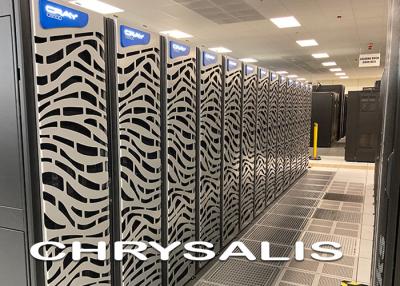Chrysalis Ready to Emerge for E3SM V2 Runs
A brand new machine, Chrysalis, was purchased by the Department of Energy (DOE) Office of Biological and Environmental Research (BER) at the end of 2020, and was installed at Argonne National Laboratory (ANL) in December for early users. After extensive optimization and finding good configurations for the model, the machine is now operational. It is open to all E3SM staff and will be the main machine for the upcoming Water Cycle simulations in the E3SM v2 campaign.
Chrysalis resides next to Anvil, an older E3SM machine, and they now share a new large (3 PB) disk space and a 4 PB tape backup system. Chrysalis is set up similarly to Anvil, with shared home directories and accounts, which enables users of Anvil to seamlessly transition to work on the new machine. Chrysalis has updated versions of Intel and GNU compilers.
Hardware
- 512 nodes, dual socket, 64 cores per node
- AMD Epyc 7532 processors (32 cores per CPU, 2.4 GHz)
- 256 GB 16 channel DDR4 3200 memory per node
- HDR200 interconnect
- 3 PB of disk space (shared with Anvil)
- 4 PB tape backup
- 2 dedicated login nodes, dual socket, 128 cores per node, AMD Epyc 7702 2.0 GHz
Capabilities
- Chrysalis will provide 4.4 M node-hours every calendar year (2.2 times more than the E3SM Compy allocation)
- Based on early v2 cost estimates (100 node-hours per simulated year), the 4.4 M node-hours/calendar year is about 45,000 years of Water Cycle coupled low-resolution simulations (~100 km horizontal atmosphere res.), or 4,500 years of Continental US (CONUS) Regionally Refined Mesh (RRM) simulations, or 700 years of high-res (25 km atmosphere) simulations.
Related Information
- Main Chrysalis page: Chrysalis – ANL
- Story about Chrysalis’ name and motivation: “New Chrysalis Machine Coming”
- E3SM members can see information on getting an account and logging in: Chrysalis – E3SM’s 1PF AMD system (internal Confluence page)

